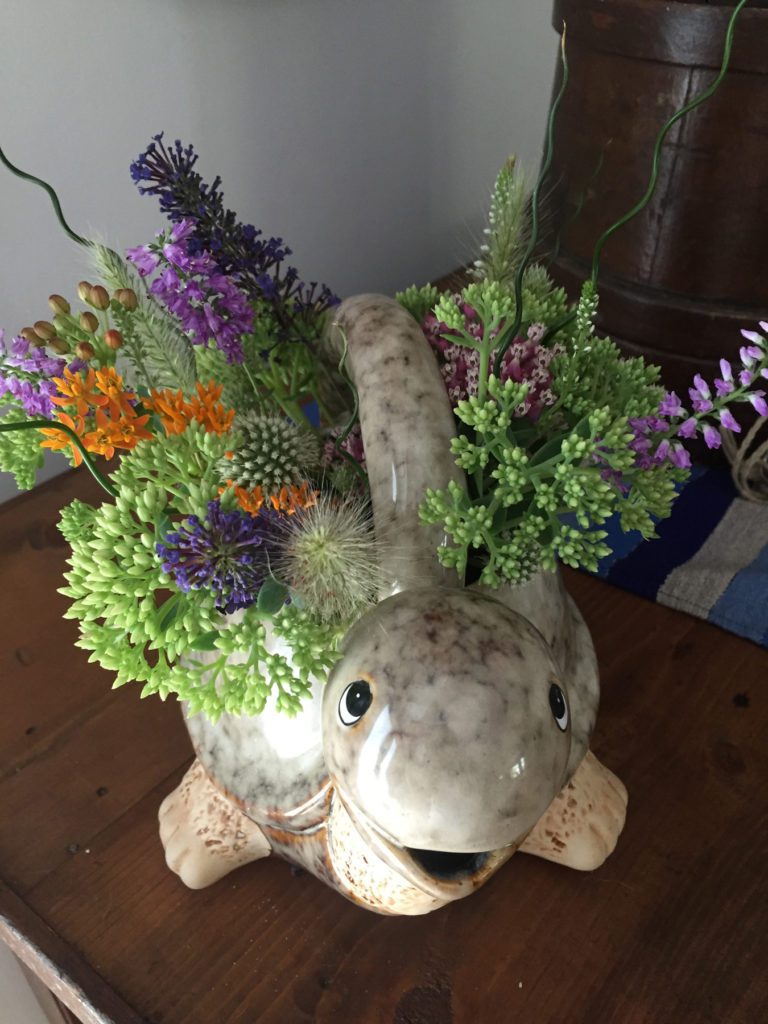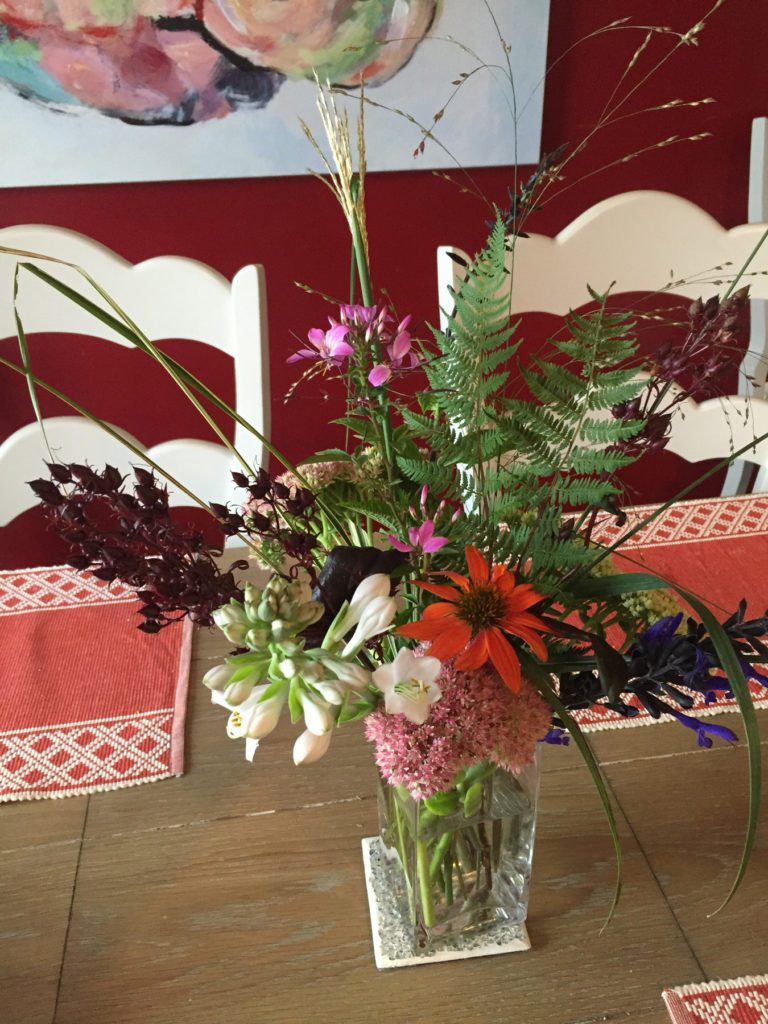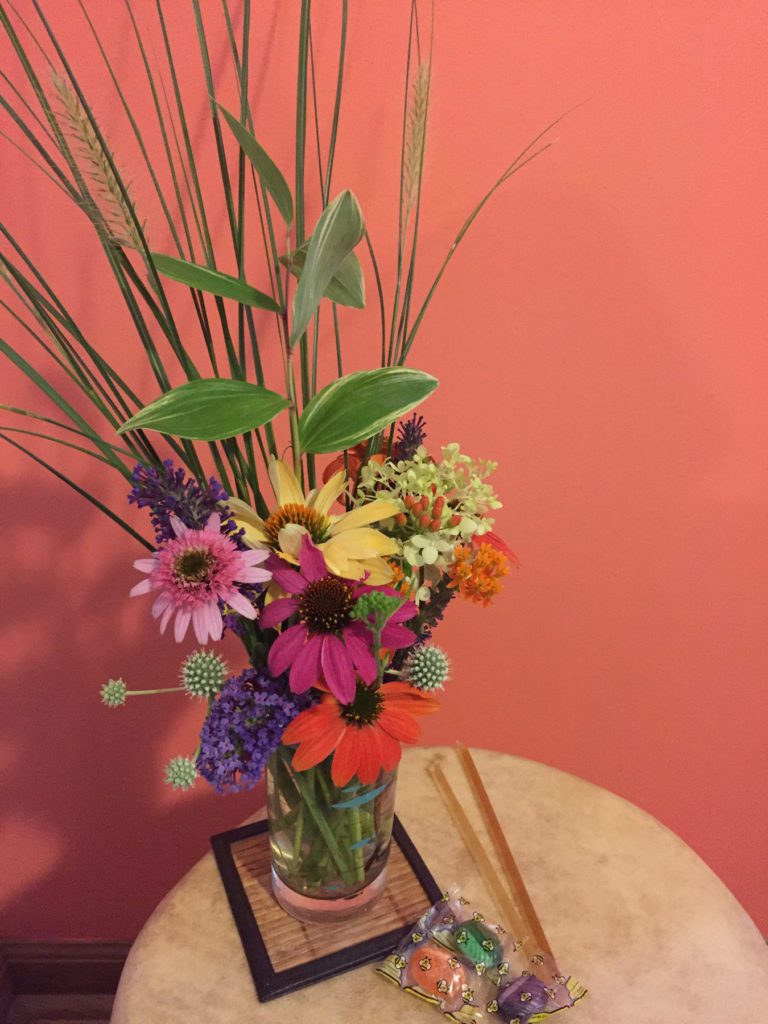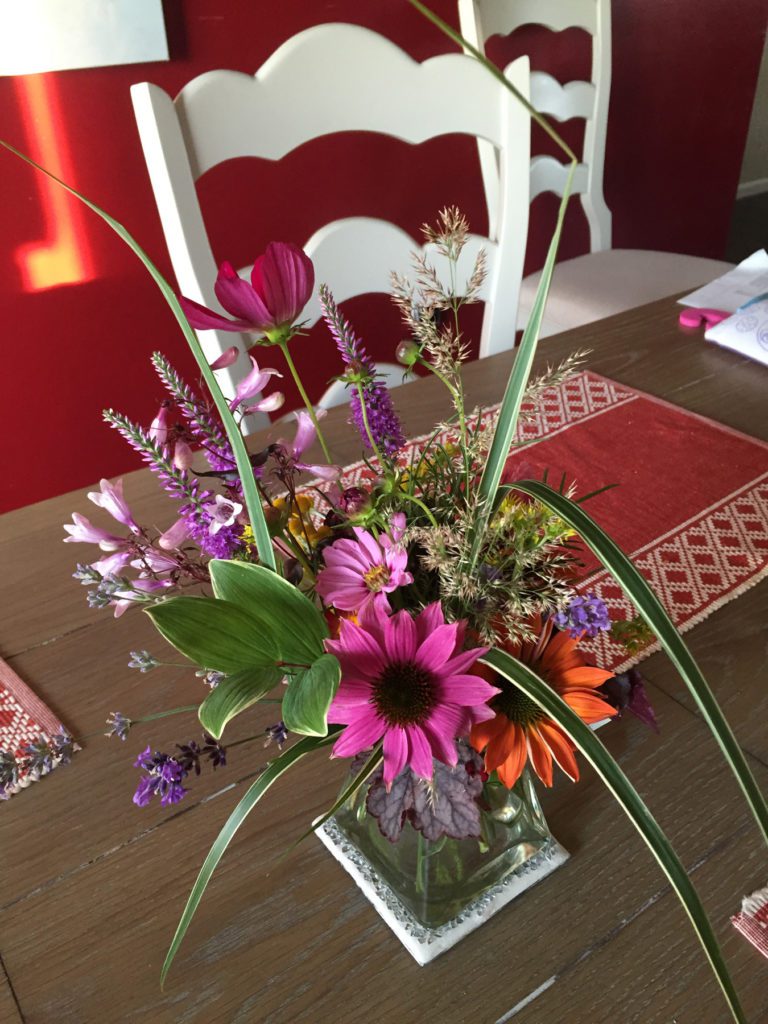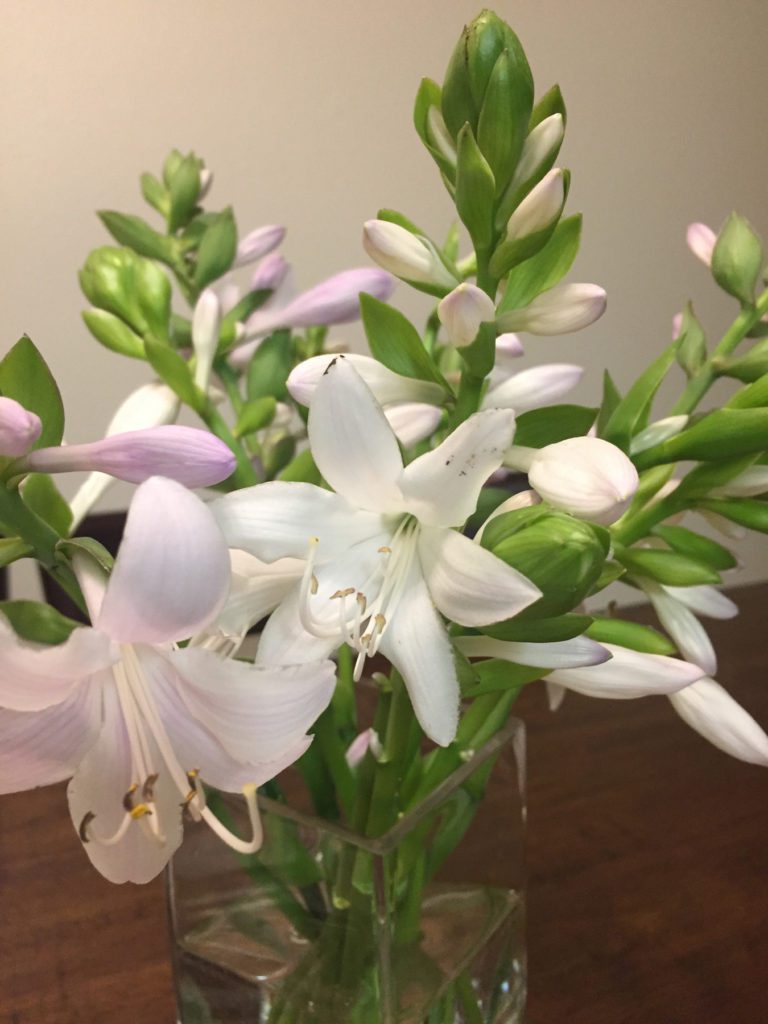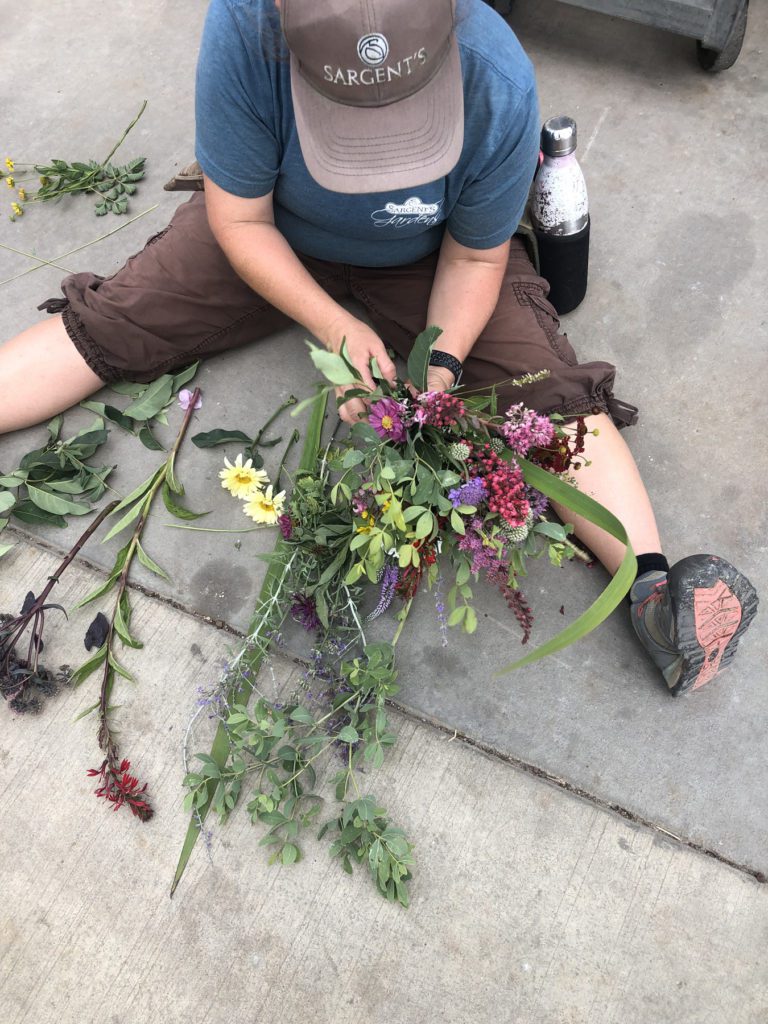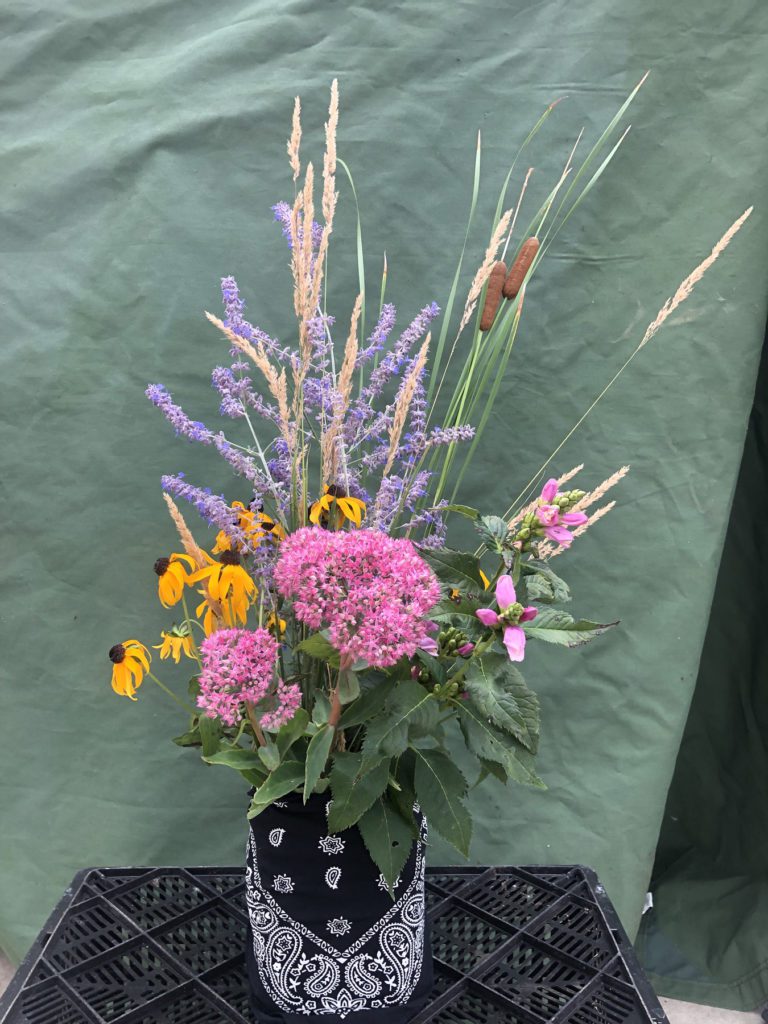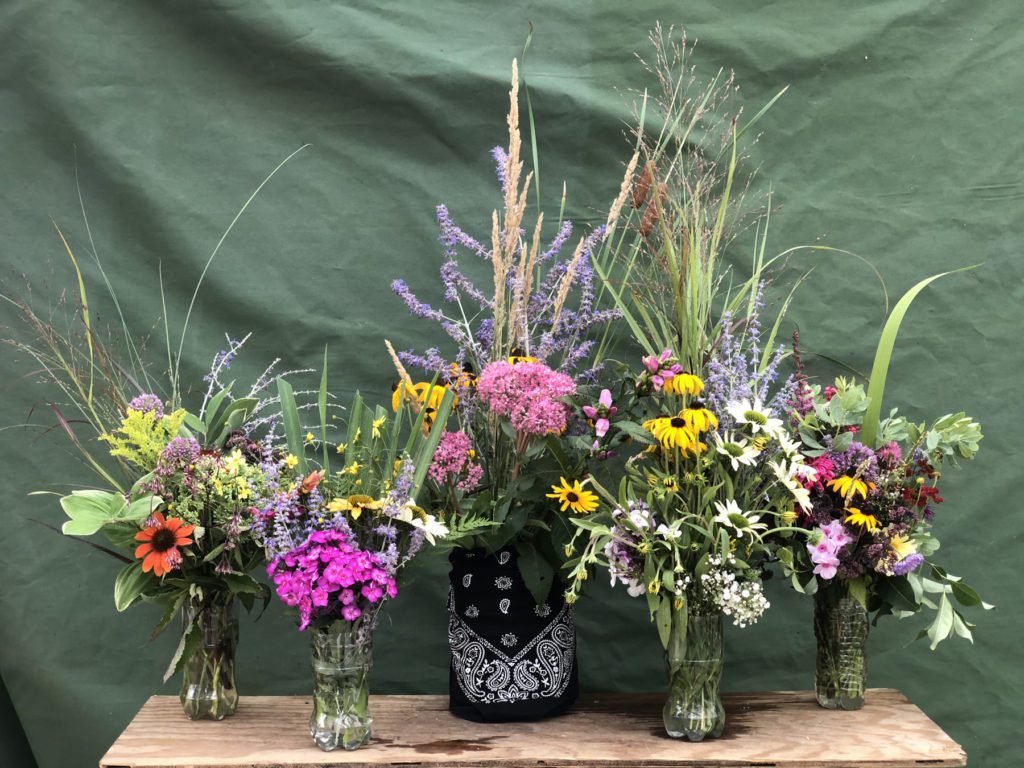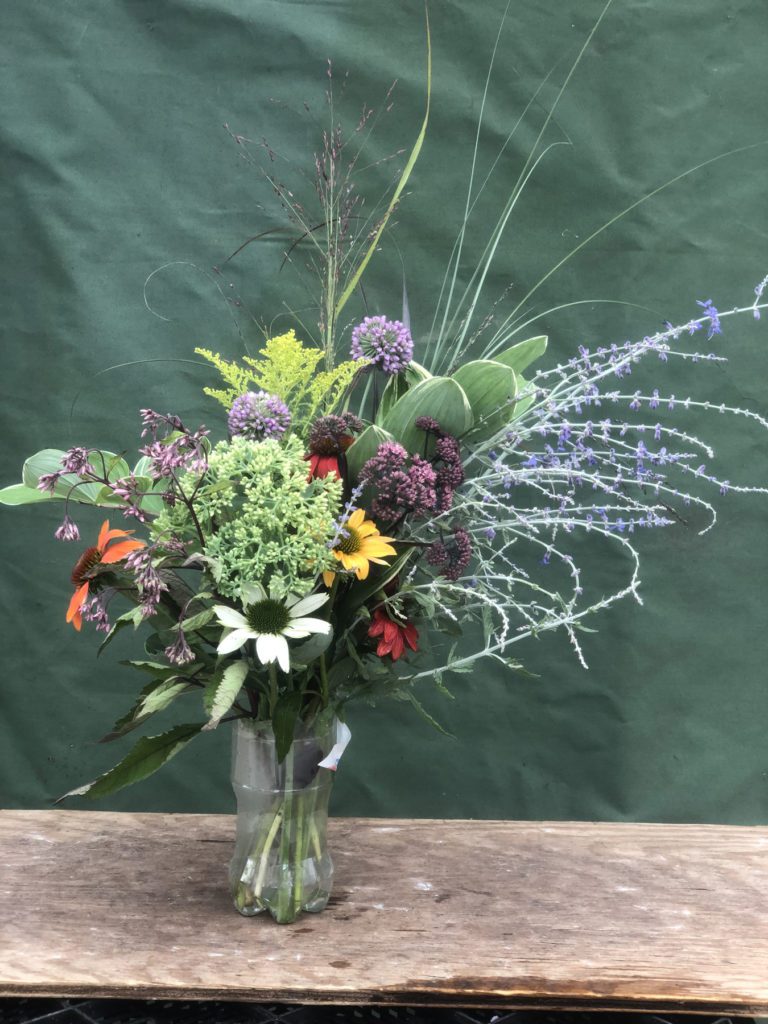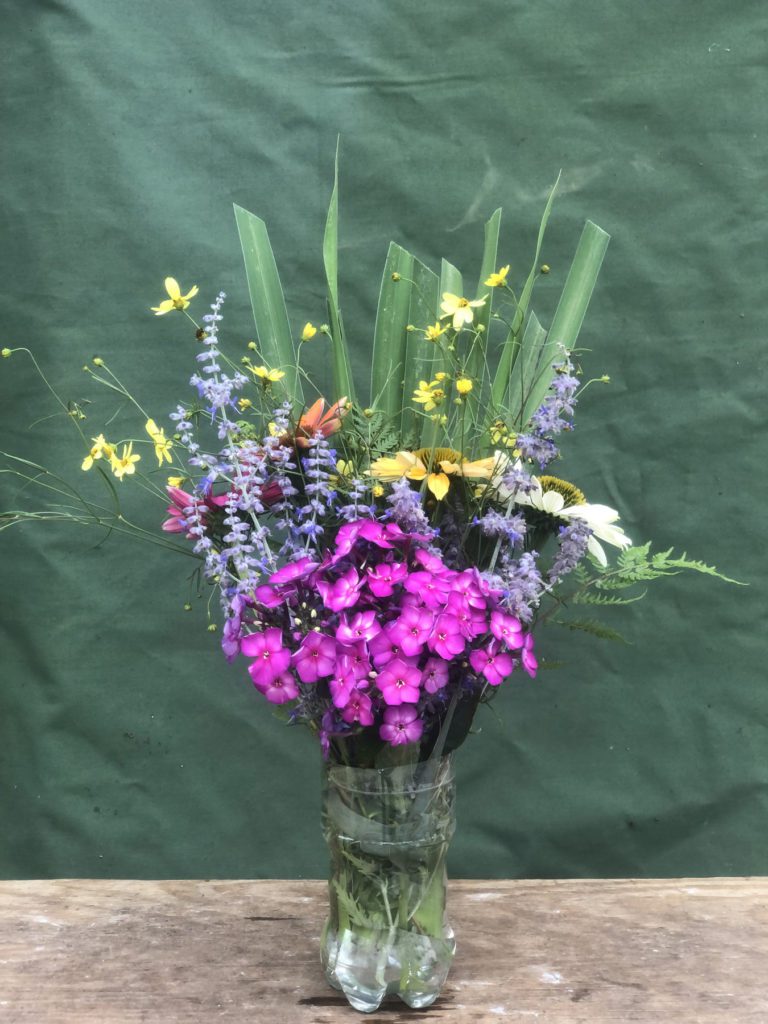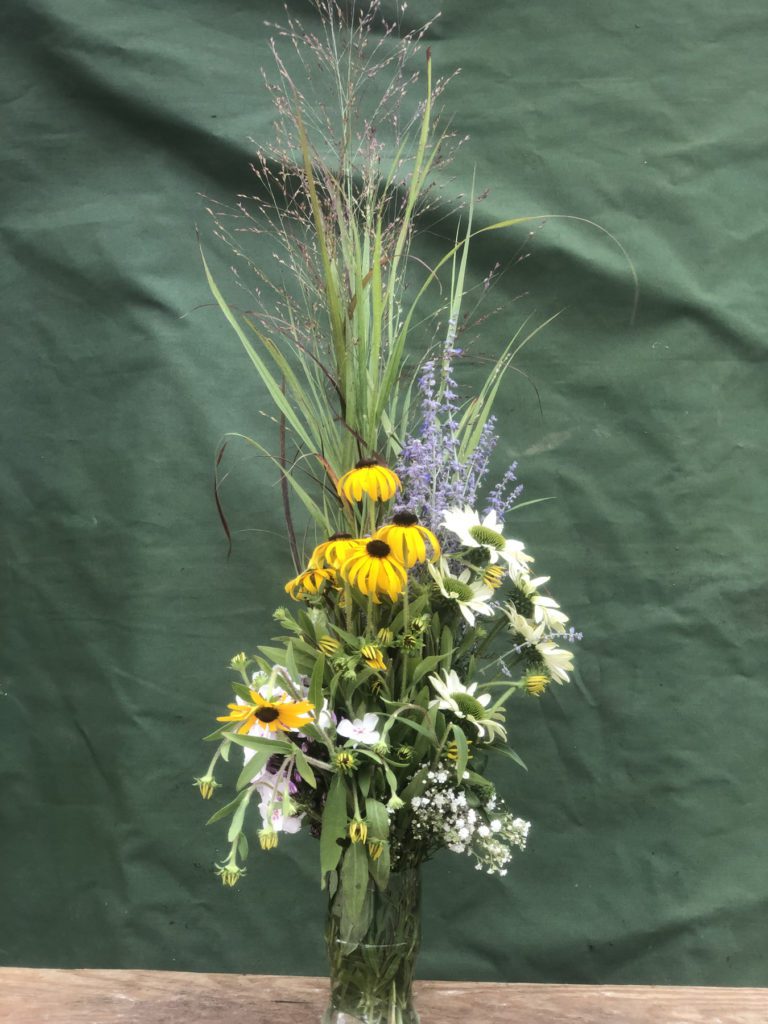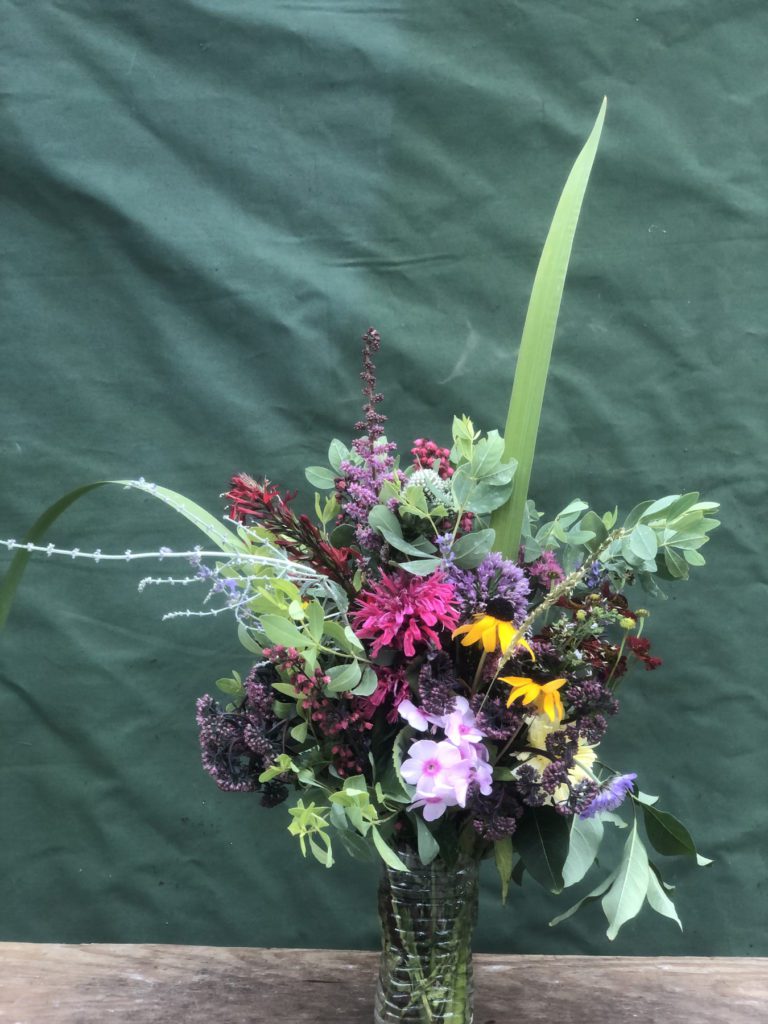The Perennial Bouquet
Perennials offer unique elements to a fresh bouquet. Not only do they provide a wide variety of shapes and colors in their flowers, but also in foliage. Harvesting from your perennial garden will provide the materials for a creative vase arrangement mimicking the same nature enjoyed outdoors!
(Be sure to check out some inspiration put together by the Sargent’s Production Team below!)
Extend the cutting season –
Careful planning will help cover the seasons in which you desire to have fresh cuts available. Even the early spring months are included by a fall planting of bulbs such as daffodils, hyacinth and tulips. The lovely scent of peonies and lily of the valley, along with columbine, iris and bleeding hearts fill the void until the summer perennials begin to bloom. The look changes drastically in the fall with access to ornamental grasses, black eyed Susan, tall garden sedum, asters and reblooming coneflowers.
Choose a color scheme –
Using perennials in a bouquet makes it easy to go for the informal feel with a rainbow of blooms. Although you may prefer to plant perennials with bloom tones that will complement the colors of individual rooms in your home. A garden consisting of only white flowers will bring a sense of simplicity and elegance to a fresh arrangement.
Add interest with different bloom shapes –
Using a variety of bloom types gives you the opportunity to change the style of your bouquet. A spike such as liatris, delphinium and salvia adds height to your arrangement. The daisy shaped bloom found in the coneflower, black-eyed Susan, heliopsis and daisies lends a casual look. The fragrant oriental lilies and the Asiatic lilies have a larger trumpet shaped flower that adds punch to an arrangement. Even though a daylily is only open for one day a stalk of several buds will provide several days of color. The unusual shape of a globe-shaped flower is found in allium, scabiosa and rattlesnake master. Astilbe has a plume-like flower. Two great performers in the flathead category is the yarrow and the tall garden sedum. Clematis can be cut and used to bring a vining effect to the vase.
Perennials offer many foliage choices –
Leaves from perennials are useful as fillers in a bouquet but they can also stand on their own. An example of this is a bouquet of nothing but the arching stems of the variegated solomon’s seal and large green heads of a tall garden sedum. The strapping leaves of the hosta add contrast to a blooming bouquet. Ferns soften a bouquet with their feathery foliage. Baptisia has tidy foliage all summer to be used in an arrangement along with its impressive stalks of seed pods. The red, pink, burgundy and chartreuse hues of the heuchera leaf is a great addition to compliment other colors in the bouquet. Both the miscanthus and panicum grasses are showy when adding them to an arrangement in small bunches. A soothing fragrance is a found when using lavender foliage.
Knowing what height of bouquets you desire to build will help with choosing the perennials that will best suit your needs. Deadheading of reblooming perennials will encourage new blooms for more bouquets. There is a sense of satisfaction when creating a bouquet from your own perennial garden whether it is to enjoy in your own home or to share with a friend.
